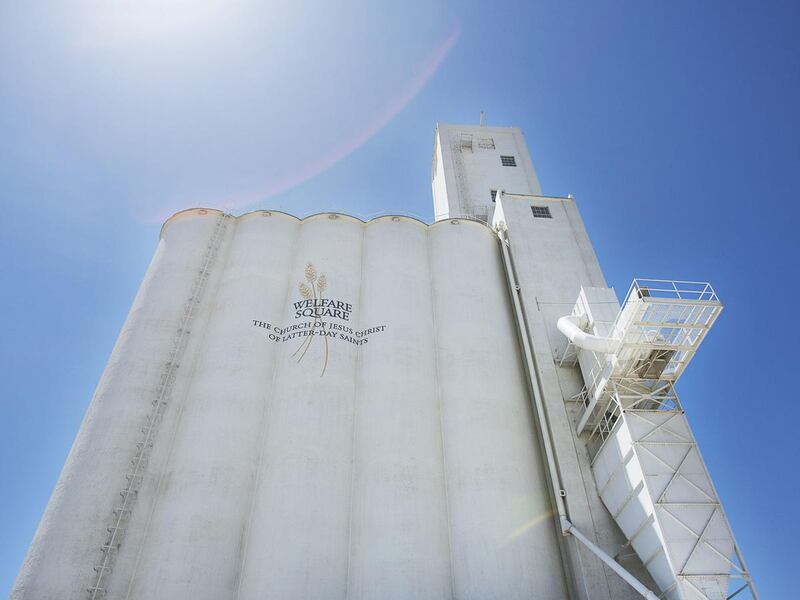Canned goods are a big part of Latter-day Saint history.
Metaphorically, preservation is an important value for Latter-day Saints. Throughout the Book of Mormon, authors frequently used the phrase “make a record.” In the Doctrine and Covenants, Joseph Smith is commanded to keep a record. While these citations refer to preserving history, Latter-day Saints have consistently had a focus on preserving food as well.
During the pandemic, Latter-day Saint journalist McKay Coppins wrote about the “pioneer spirit” of food preservation for The Atlantic.
“On a metal storage shelf in the corner of my garage, dozens of multi-liter cans sit stacked on top of one another.” Coppins wrote. “They are filled with dehydrated carrots and pinto beans; wheat, oats, and powdered milk — enough food, at least in theory, to keep me, my wife, and our three kids fed for several weeks in the event of an emergency.”
Coppins expressed his admiration for this habit, which he traced back to the church’s admonition for members to be prepared. Members are counseled to have food storage in case of job loss — or in case of mass food shortages. These principles of self-reliance have strong roots for Latter-day Saints. But they are also tied to charity.
How Latter-day Saints began using food storage
I’ve written before about the miracle of the gulls, which influenced why Latter-day Saints quickly banded together to create food storage.
William Hartley recounted the story of the miracle of the gulls in Utah History Quarterly. The pioneers, who began arriving in Salt Lake Valley on July 22, 1847, had struggled with the new terrain, and a couple of frosts destroyed their crops.
The frost and crickets had disastrous effects. Eliza R. Snow was remembered as saying, “This morning’s frost in unison with the ravages of the crickets for a few days past produces many sighs, and occasionally some long faces.” Apparently, there were “millions of crickets” — or, at least, that’s what one of Lorenzo Dow Young’s wives wrote in his diary.
While gulls swooped in to save the day and allowed the Saints to harvest meager crops to not starve throughout the winter, their position on the Western frontier was a delicate one. So, eventually they began storing food when possible — but not just for self-preservation.
Food storage for charity and preparedness
One of the early efforts to store food was led by the Relief Society.
The Ephraim Relief Society Granary became operational in 1876. After the Saints had failed before to store grain, President Brigham Young asked Emmeline B. Wells to head up the grain storage program.
The purpose of gathering grain was both for the pioneers to be able to sustain themselves, but also to have a bounty of grain to give away to the poor and needy — it was called Salvation Wheat.
Florence Peterson Faux wrote, “When it was finally thrashed, Sarah had raised 60 bushels of wheat. This she divided with the settlers — it was their salvation, for by frugal, careful managing, it supplied bread for the little settlement all winter. They called it ‘Salvation Wheat’ and when it was almost gone, Sarah put some in a small bottle to show her husband when he came home from his mission.”
By this time, Latter-day Saints had already established bishop’s storehouses. The prophet Joseph Smith received a revelation in 1831 regarding the necessity of storehouses, and the first one was notably in Newell K. Whitney’s stores. The church had made several efforts to preserve food for preparedness and charity.
The establishment of the welfare program
For several years, local congregations and the Relief Society ran programs to preserve food for preparedness and charity.
But then, the church consolidated its efforts and created the welfare program that is existence today. According to Church Newsroom, “In April 1936, the Church formally organized a welfare program to help Church members suffering from the devastating effects of the Great Depression. Today, that welfare program has expanded to all corners of the globe and assists members and people of all faiths or no faith at all.”
This welfare program consists of bishops’ storehouses, processing plants, mills and more. One of the most famous set of facilities is called Welfare Square. Church Newsroom wrote that Welfare Square is “located near Church headquarters in Salt Lake City, Utah. Welfare Square is the largest concentration of Church-owned welfare facilities. Buildings include a cannery, a milk processing plant, a bishops’ storehouse, a thrift store, an employment center and silos where wheat and other grains are stored.”
In addition to Welfare Square, the church established several local canneries where Latter-day Saints would preserve food.
U.S. President Ronald Reagan visited the church’s welfare cannery in Ogden along with future church presidents Gordon B. Hinckley and Thomas S. Monson.
The church’s welfare program, still in existence today, comes from the Latter-day Saint tradition of preserving food to sustain the community and to give generously to those who are in need of it.



